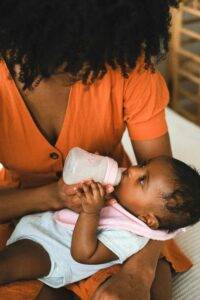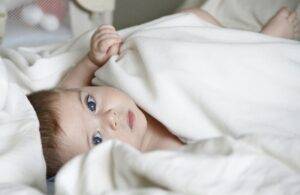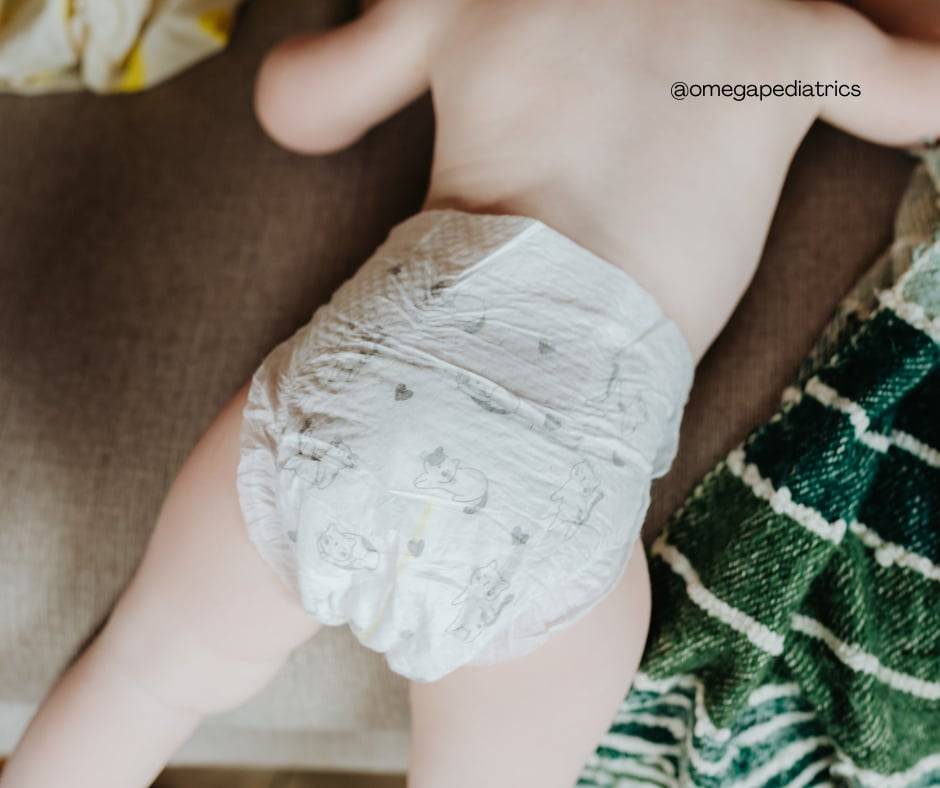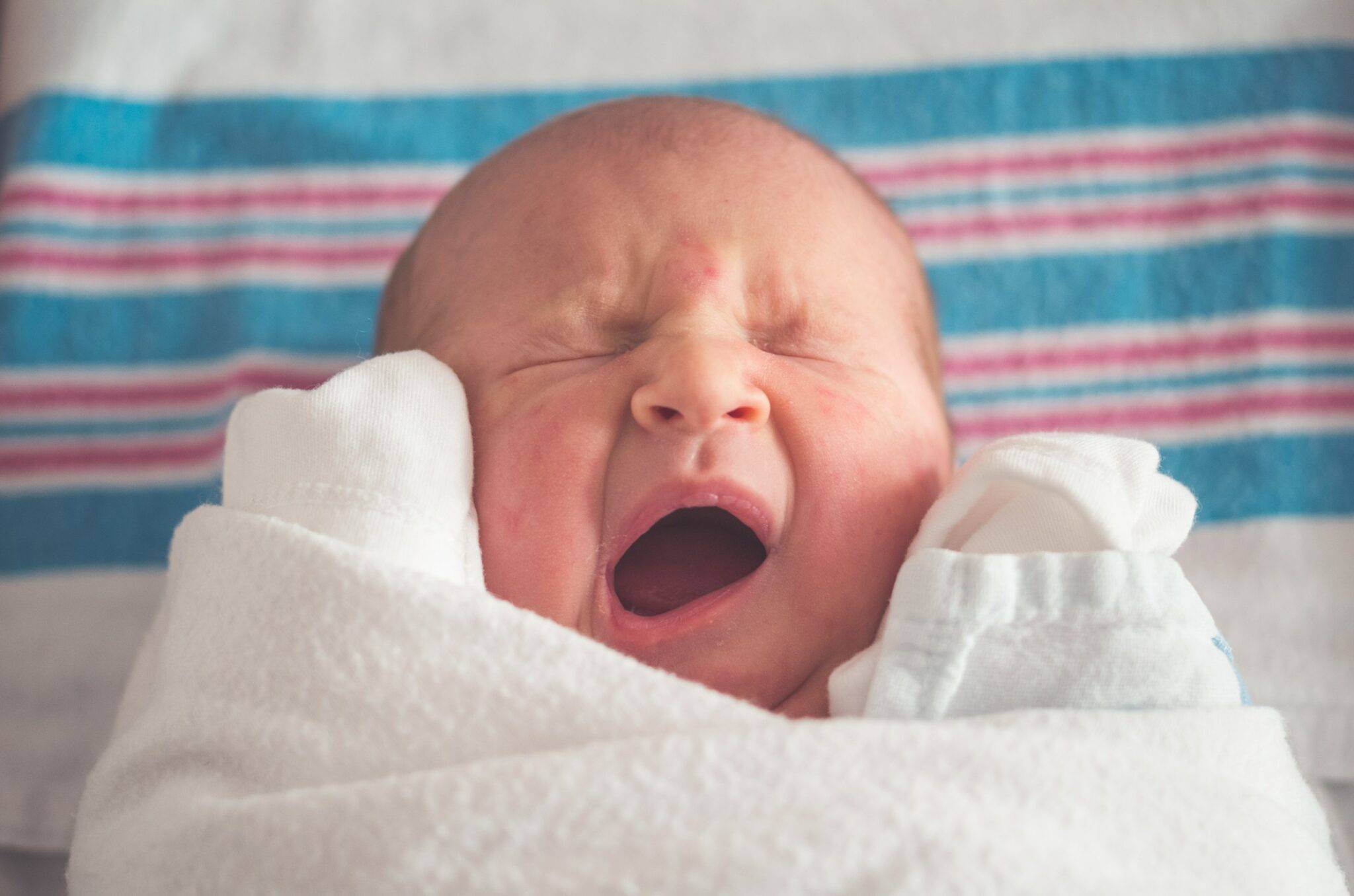When Newborn Baby Can See
One of the most heartwarming experiences for new parents is seeing their baby open their eyes and look around for the first time. Understanding when newborn baby can see and how their vision develops helps parents support their child’s growth. Let’s explore the fascinating journey of a baby’s visual milestones, from birth to their first year.
What Can Newborn Babies See?
1. Newborn Vision: The First Days
When a baby is born, their vision is limited. In the first few days, newborns only see about 8 to 12 inches away, just enough to see their parent’s face while breastfeeding or being held. Their vision is blurry, but they are attracted to high-contrast patterns and bright colors.
2. First Week: Recognizing Faces
In the first week, babies recognize familiar faces, especially their parents. They stare intently at faces and even begin to mimic facial expressions. This early connection is crucial for bonding and emotional development.
3. One Month: Following Moving Objects
By the end of the first month, babies can start tracking moving objects with their eyes. This milestone indicates that their eye muscles and brain are beginning to coordinate more effectively. Providing visually stimulating toys can help enhance this ability.
How Vision Develops Over Time
Two to Three Months: Improved Focus and Color Vision
At 2-3 months, babies can focus clearly on objects and people. They distinguish between different colors, preferring bright primary colors and high-contrast patterns. This is an ideal time to introduce colorful and visually engaging toys.
Four to Six Months: Depth Perception and Hand-Eye Coordination
At 4-6 months, significant changes occur in a baby’s vision. They develop better depth perception, allowing them to see the world in three dimensions. This period also marks improved hand-eye coordination, as babies start reaching for and grasping objects.
Seven to Nine Months: Recognizing Familiar Objects
By 7-9 months, babies recognize familiar objects and people from a distance. Their vision is becoming more like an adult. Encouraging playtime with varied toys helps further develop their visual and cognitive skills.
Ten to Twelve Months: Visual Memory and Mobility
As babies approach their first birthday, their visual memory becomes more sophisticated. They can remember and recognize objects they have seen before. This stage often coincides with increased mobility, such as crawling and walking, allowing them to explore their environment more independently.
Signs of Healthy Vision in Babies
- Tracking Movement: Healthy babies should be able to track moving objects with their eyes by three to four months. This skill is essential for developing coordination and spatial awareness.
- Eye Contact and Smiling: Babies have eye contact and smile in response to familiar faces by three months. These interactions are vital for social and emotional development.
- Reaching for Objects: Around 5-6 months, babies reach for and grasp objects. This milestone indicates good hand-eye coordination and visual development.
- Recognizing Faces: By 6-9 months, babies recognize and show a preference for familiar faces. This ability reflects healthy visual and cognitive development.
Understanding the Science Behind Newborn Vision
The Structure of a Newborn’s Eyes
The eyes of a newborn aren’t just miniature versions of adult eyes; they’re still developing in crucial ways. The retina, the light-sensitive layer at the back of the eye, is not fully developed at birth. This is one reason why a newborn’s vision is quite limited.
Moreover, the optic nerve, which transmits visual information from the eye to the brain, is also immature.
Role of the Brain in Vision Development
Visual development is as much about the brain as the eyes. The brain needs to learn how to process the visual information it receives. In the early months, the visual cortex (the part of the brain that processes visual information) undergoes rapid development.
This period is crucial for establishing the neural pathways used for visual processing throughout life.
Factors Influencing Visual Development
Several factors influence how a baby’s vision develops. Genetics and environment may play. Babies who are exposed to a variety of visual stimuli tend to have better visual skills. This includes high-contrast patterns and objects and the dynamic environment provided by interaction with caregivers and exploration.
Detailed Developmental Milestones and Parental Support
Newborn to One Month: Laying the Foundation
In the newborn stage, visual stimulation significantly aids in developing a baby’s vision. Although their sight is blurry, babies are naturally drawn to their parents’ faces and contrasting patterns. Gentle movements and close face-to-face interactions are highly beneficial.
Simple black-and-white toys or images placed within their limited range of vision help stimulate their visual system. As they approach one month, you might notice your baby beginning to follow a moving object, like a parent’s face, as it moves side to side.
Two to Three Months: Engaging with the World
As babies enter their second month, their vision sharpens, and they see more clearly. At this stage, they recognize more distinct shapes and patterns. This is the time to introduce brightly colored toys and varied shapes.
Mobiles with simple patterns and bright colors hung over their crib captivate their interest and encourage them to follow the moving shapes. When interacting with your baby, exaggerated facial expressions and slow movements help them focus and engage more effectively.
Four to Six Months: Exploring and Interacting, Depth Perception and Hand-Eye Coordination
There are significant changes in a baby’s vision. During the four to six-month period, babies’ depth perception improves, enabling them to see the world in three dimensions. This period also marks improved hand-eye coordination, as babies start reaching for and grasping objects.
This is a crucial time for introducing varied toys that they can reach for and explore. Soft, safe toys that they grasp and examine are excellent choices. Tummy time remains important as it encourages them to lift their head and look around, further strengthening their visual and physical development.
At this stage, playing peek-a-boo or other simple games involving appearing and disappearing objects is fun and beneficial for visual development.
Seven to Nine Months: Mobility and Recognition
As babies become more mobile, their vision advances, allowing them to recognize familiar objects and people from a distance. Their vision is becoming more like that of an adult. This is an excellent time to introduce complex toys that require manipulation, such as stacking rings or shape sorters.
These activities support visual development and enhance hand-eye coordination and fine motor skills. Regularly naming objects and people during interactions helps reinforce their recognition skills and supports language development.
Ten to Twelve Months: Visual Memory and Exploration
As they approach their first birthday, babies’ visual memory improves significantly, becoming more sophisticated They remember and recognize objects they have seen before and understand their purpose. This stage coincides with increased mobility, allowing them to explore their environment more independently.
Activities like reading picture books, playing with interactive toys, and exploring new environments under close supervision help them to connect between visual input and their expanding world. Pointing out and naming objects during these explorations enhances their visual and cognitive development.
Encouraging Healthy Visual Development
- Provide Visual Stimulation: Offering varied visually stimulating toys and objects helps promote healthy visual development. High-contrast toys, colorful mobiles, and picture books are excellent choices.
- Ensure Proper Lighting: Good lighting in the baby’s environment supports visual development. Natural light is ideal, but soft indoor lighting can also be beneficial.
- Engage in Face-to-Face Interaction: Regular face-to-face interaction helps babies learn to focus and recognize faces. Smiling, talking, and making facial expressions all contribute to healthy visual and emotional development.
- Schedule Regular Eye Check-Ups: Regular eye check-ups with a pediatrician are essential to monitor and ensure healthy visual development. Early detection of vision problems allows for timely intervention and treatment.
Monitoring and Ensuring Healthy Vision
- Regular Pediatric Check-Ups: Pediatricians perform basic vision screenings and refer you to a pediatric ophthalmologist if necessary. These check-ups help detect any issues early, allowing for timely intervention.
- Recognizing Signs of Vision Problems: As a parent, be aware of the signs of vision problems. If your baby doesn’t seem to recognize faces, follow moving objects, or make eye contact, it’s worth discussing with your pediatrician. Also, if you notice any abnormalities in the appearance of your baby’s eyes, such as cloudiness or misalignment, seek medical advice.
- Encouraging a Healthy Lifestyle: Your baby gets adequate nutrition, including essential vitamins and minerals that support eye health. Regular physical activity and a safe, stimulating environment contribute to healthy development.
Recognizing Potential Vision Issues Early
Understanding Vision Screening
Vision screening for infants is essential in early childhood health care. Pediatricians perform initial vision screenings during routine check-ups to ensure babies’ eyes develop normally. These screenings identify potential issues early, allowing for prompt intervention.
If a pediatrician detects abnormalities, they may refer the baby to a pediatric ophthalmologist for a detailed examination.
Common Vision Problems in Infants

Some common vision problems in infants include refractive errors (such as nearsightedness, farsightedness, or astigmatism), strabismus, and amblyopia. Early detection and treatment of these conditions are crucial to affect when newborn baby can see without problems. Treatment may vary from corrective lenses to eye patches.
- Strabismus (Crossed Eyes or Misaligned Eyes): This is a condition where the eyes don’t align properly. It’s relatively common in newborns, but if it persists beyond a few months, it requires medical attention. Treatment includes eye exercises, glasses, or in some cases, surgery.
- Amblyopia (Lazy Eye): This condition occurs when one eye doesn’t develop proper vision. This happens if the brain favors one eye over the other, often due to strabismus or a significant difference in prescription between the two eyes. Early detection and treatment are critical to prevent long-term vision problems.
- Congenital Cataracts: This condition involves the clouding of the eye’s lens present at birth. They interfere with normal vision development and may require surgical removal. Early intervention is essential to ensure that vision develops properly.
The Role of Genetics and the Environment
Genetics and environmental factors influence when newborn baby can see. If there’s a family history of vision problems, monitor the baby’s visual development closely. Ensuring a healthy and stimulating environment supports proper vision development, including adequate lighting, safe opportunities for exploration, and minimizing exposure to harmful substances.
When to Be Concerned
- Lack of Eye Contact: If a baby consistently avoids eye contact or doesn’t seem to recognize familiar faces by three months, it may indicate a vision problem.
- Not Tracking Objects: If a baby isn’t following moving objects with their eyes by 3-4 months, it could be a sign of visual impairment.
- Misaligned Eyes: If a baby’s eyes appear crossed or misaligned consistently after six months, it may indicate strabismus, which requires medical attention.
- Delayed Hand-Eye Coordination: If the baby isn’t reaching for objects by 5-6 months, it could be a sign of developmental delays, including visual impairments.
Practical Tips for Supporting Visual Development
- Creating a Visually Stimulating Environment: Use toys and objects with bright colors and high contrast. Mobiles, picture books, and colorful play mats are beneficial. Changing the environment regularly also helps by providing new visual experiences.
- Encouraging Movement and Exploration: Encouraging your baby to move and explore their surroundings promotes healthy visual development. Tummy time is particularly beneficial as it strengthens muscles and gives babies a different visual perspective. As they grow, allowing them to reach for and grasp objects further enhances their hand-eye coordination.
- Interaction and Communication: Engage with your baby through eye contact, facial expressions, and talking. These interactions help your baby learn to focus and recognize faces. They also contribute to social and emotional development, interconnected with visual development.
Support Your Baby’s Visual Journey
Understanding when newborn baby can see and how their vision develops is essential for providing the best care to support their growth. Each visual milestone, from the first blurry glimpses to the sophisticated visual memory by the first year, stamps a significant step in their journey. Support your baby’s visual journey effectively.
For more information on newborn care and development, check out these articles from Omega Pediatrics:
- How Long Can a Baby Safely Use a Bassinet: 6 Essential Factors to Consider
- The Golden Hour: Newborn Bonding for a Healthy Start
These resources offer valuable insights and tips for nurturing your baby’s growth and well-being.






